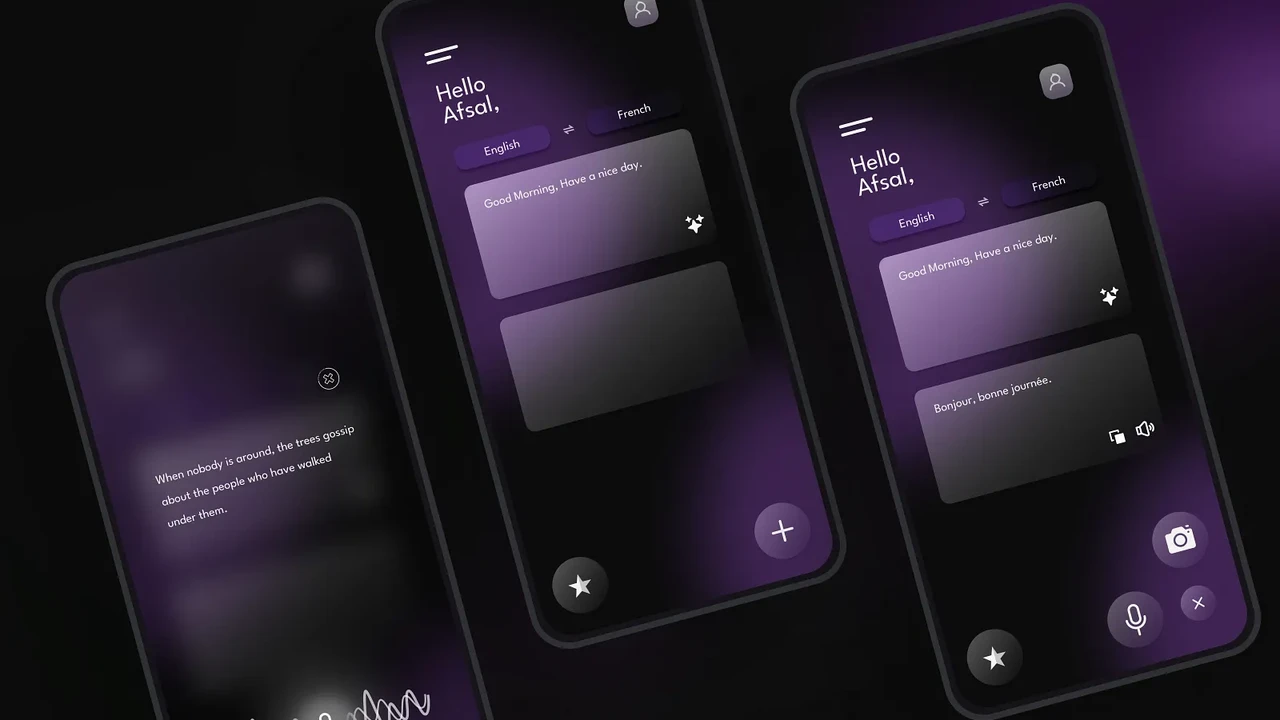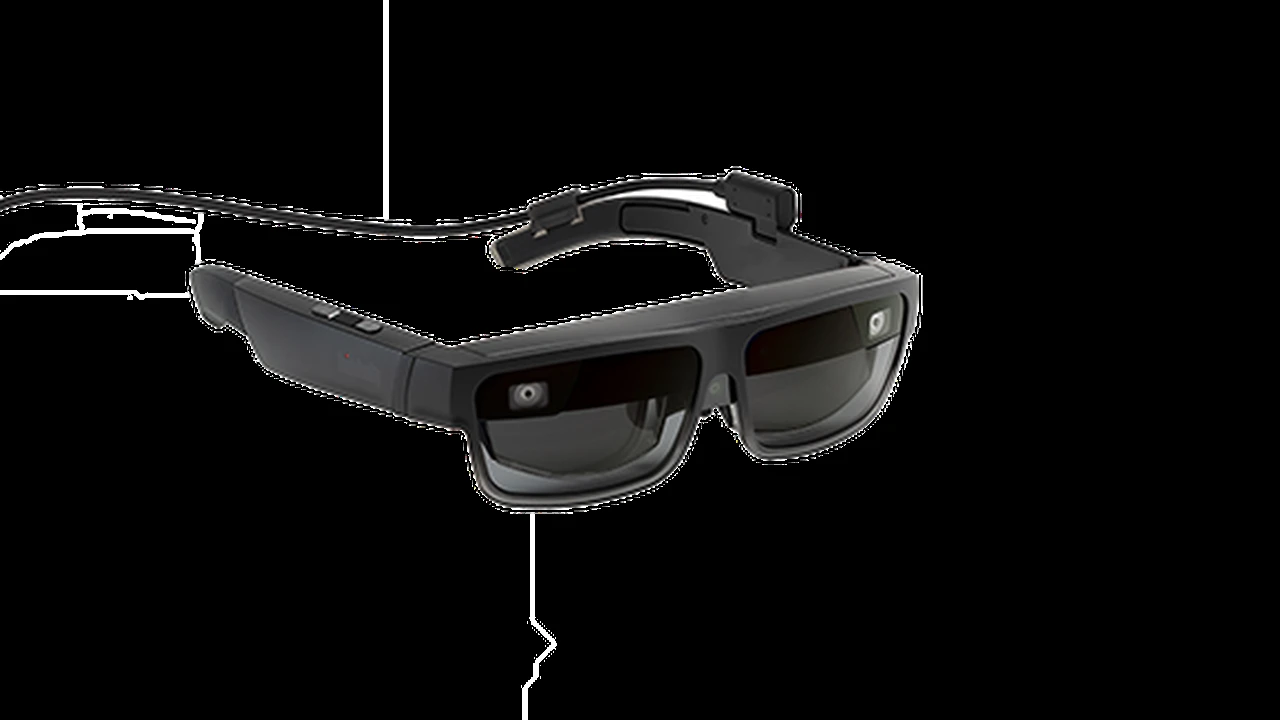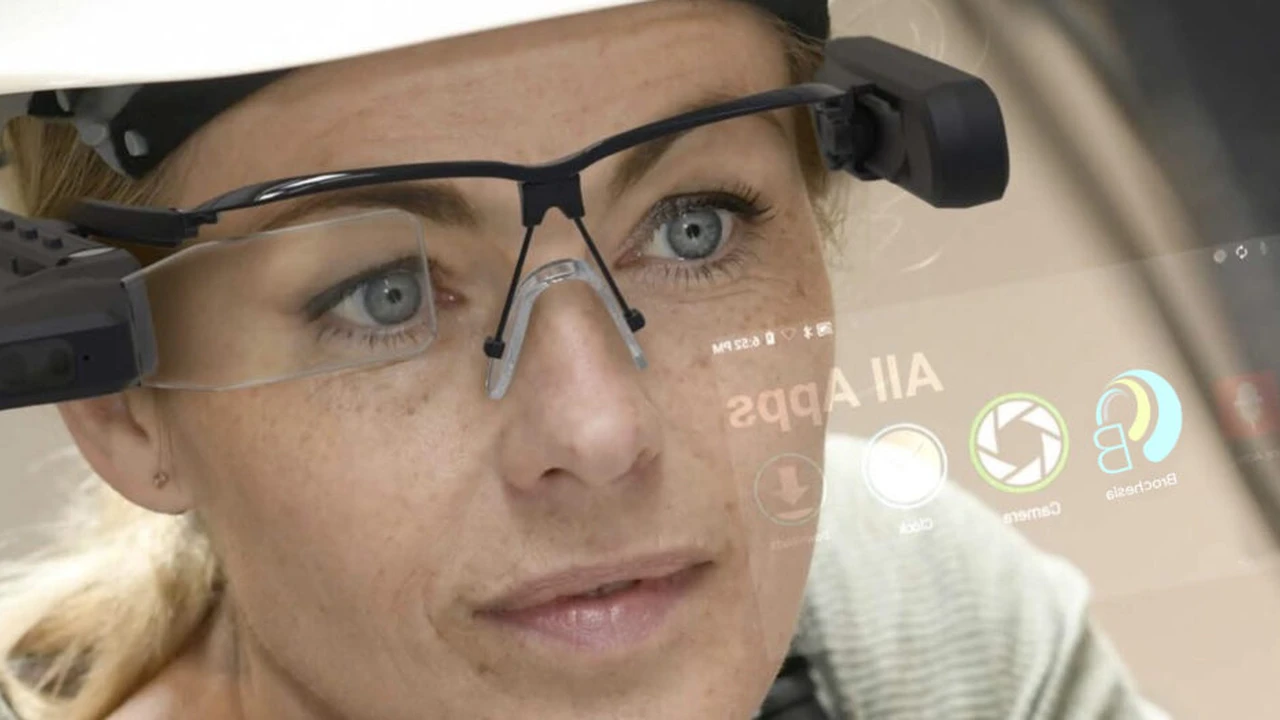Smart Glasses for Language Translation Breaking Barriers
Break down language barriers with smart glasses offering real-time translation capabilities.

Smart Glasses for Language Translation Breaking Barriers
The Dawn of Real Time Translation Smart Glasses
Imagine traveling to a foreign country, walking into a bustling market, and understanding every conversation around you. Or perhaps you're in a crucial international business meeting, and the language barrier simply melts away. This isn't science fiction anymore; it's the promise of smart glasses equipped with real-time language translation. These innovative devices are poised to revolutionize how we interact globally, making cross-cultural communication smoother and more accessible than ever before. Forget fumbling with translation apps on your phone or relying on awkward phrasebooks. Smart glasses bring the translation directly into your line of sight, often with audio cues, creating an incredibly immersive and intuitive experience.
The core idea is simple yet powerful: capture spoken words, process them instantly, and display or vocalize the translation. But the technology behind it is anything but. It involves sophisticated microphones, powerful processors, advanced artificial intelligence for natural language processing (NLP) and machine learning, and often, augmented reality (AR) overlays to display text. The goal is not just to translate words, but to understand context, nuances, and even emotional tone, providing a truly comprehensive communication solution. This isn't just about convenience; it's about fostering deeper connections, enabling global commerce, and enriching personal experiences.
How Smart Glasses Translate Understanding the Technology
So, how do these magical glasses actually work? At their heart, smart glasses for translation combine several cutting-edge technologies. First, they need excellent audio input. This means high-quality microphones, often with noise-cancellation capabilities, to accurately capture speech even in noisy environments. Once the audio is captured, it's sent to a processing unit, which can be onboard the glasses themselves or, more commonly, a connected smartphone or cloud server. This is where the heavy lifting of speech-to-text conversion happens.
Next comes the crucial part: natural language processing (NLP) and machine translation (MT). AI algorithms analyze the transcribed text, identify the language, and then translate it into the desired target language. Modern MT systems are incredibly sophisticated, leveraging deep learning models trained on vast datasets of text and speech. They can handle complex sentence structures, idioms, and even slang with surprising accuracy. After translation, the text is either displayed on the smart glasses' optical display, often as subtitles overlaid on the real world, or converted back into speech via text-to-speech (TTS) technology, delivered through integrated speakers or bone-conduction audio.
Some advanced models even incorporate augmented reality to identify objects or signs in the real world and translate text on them, adding another layer of utility. The speed of this entire process is paramount. For real-time communication, the latency must be minimal, ideally just a few milliseconds, to ensure a natural conversational flow. This requires powerful processors and optimized algorithms, often leveraging cloud computing for instantaneous processing power.
Key Features to Look for in Translation Smart Glasses
When you're considering investing in smart glasses for language translation, there are several key features that can significantly impact your experience. Understanding these will help you choose the best device for your specific needs.
Accuracy and Language Support Critical Translation Quality
This is arguably the most important feature. How accurate are the translations? Do they sound natural? Look for devices that boast high accuracy rates, especially for the languages you intend to use most frequently. Also, check the breadth of language support. Some glasses might only support a handful of popular languages, while others offer dozens. The more languages, the more versatile the device will be for global travel or diverse interactions.
Real Time Performance Speed and Latency
For seamless conversations, the translation needs to happen almost instantaneously. Minimal latency is crucial. Look for reviews or specifications that highlight real-time performance. A delay of even a few seconds can disrupt the flow of a conversation and make communication awkward.
Display Quality and Readability Visual Translation
If the glasses display text, the quality of the optical display matters. Is the text clear, crisp, and easy to read in various lighting conditions? Is the font size adjustable? Some displays might be too small or dim for comfortable reading, especially during extended use. Consider if the display is unobtrusive or if it creates a distraction.
Audio Quality and Noise Cancellation Clear Communication
For spoken translations, the audio input and output quality are vital. Good microphones with effective noise cancellation will ensure your speech is accurately captured, even in noisy environments. Similarly, clear audio output, whether through speakers or bone conduction, is essential for understanding the translated speech.
Battery Life and Portability On the Go Translation
Translation smart glasses are often used on the go, so battery life is a significant factor. How long can they operate on a single charge? Is there a portable charging case? Their portability and comfort are also key. Are they lightweight and comfortable enough for extended wear? Do they look discreet or are they bulky?
Connectivity Options Bluetooth and Wi-Fi
Most smart glasses rely on a connection to a smartphone or the cloud for processing. Ensure they have reliable Bluetooth or Wi-Fi connectivity. Some might even offer cellular connectivity for true standalone operation, which can be a huge plus for travelers.
User Interface and Ease of Use Intuitive Controls
How easy are they to set up and use? Are the controls intuitive? Can you easily switch between languages or modes? A complex interface can detract from the overall experience, especially when you're trying to communicate quickly.
Top Smart Glasses for Language Translation Product Recommendations
While the market for dedicated translation smart glasses is still evolving, several promising products offer excellent language translation capabilities. Here are a few notable mentions, along with their features, use cases, and approximate pricing.
Timekettle X1 AI Interpreter Hub
While not strictly 'glasses,' the Timekettle X1 is a revolutionary device that integrates translation into a hub that can connect to various accessories, including a pair of discreet earbuds that function similarly to smart glasses in terms of audio delivery. It's designed specifically for professional and personal communication across language barriers.
- Features: The X1 boasts five translation modes: Chat Mode (for multi-person conversations), Listen Mode (for lectures or presentations), Speak Mode (for one-on-one), Ask Mode (for quick questions), and Offline Mode (for basic translation without internet). It supports 40 languages and 93 accents online, and 13 languages offline. It uses a powerful AI engine for high accuracy and low latency. The hub itself has a touchscreen for easy control and can connect to multiple earbuds for group conversations.
- Use Cases: Ideal for business meetings, international conferences, travel, and educational settings. Its multi-person chat mode is particularly useful for group discussions.
- Comparison: Unlike traditional smart glasses that focus on visual overlays, the X1 prioritizes audio translation, making it very natural for conversations. Its strength lies in its dedicated focus on translation and its versatile modes.
- Price: Approximately $699 - $799 USD.
Vuzix Blade Upgraded Smart Glasses
The Vuzix Blade are more general-purpose smart glasses with robust AR capabilities, and they can integrate with translation apps to provide visual text translation.
- Features: These glasses feature a full-color waveguide display, integrated speakers, noise-canceling microphones, and a camera. They run on Android and can access various apps, including third-party translation applications. While not built solely for translation, their display allows for real-time text overlays.
- Use Cases: Business applications, field service, and personal use where visual translation of signs or documents is needed, in addition to conversational translation via an app.
- Comparison: The Vuzix Blade offers a broader range of smart glass functionalities beyond just translation. Its translation capabilities depend on the quality of the third-party app used, but the visual display is a significant advantage for reading translated text in real-time.
- Price: Approximately $799 - $999 USD.
Nreal Air Smart Glasses (with compatible translation apps)
Nreal Air are primarily designed for entertainment and productivity, offering a large virtual screen experience. However, when paired with a compatible Android phone and a translation app, they can display translated text in a large, immersive format.
- Features: Nreal Air boasts an impressive micro-OLED display that projects a virtual screen equivalent to 201 inches at 6 meters. They are lightweight and comfortable. While they don't have built-in translation, their ability to mirror a phone screen means any translation app running on the phone can be viewed on the glasses.
- Use Cases: Personal travel, watching translated videos, or using translation apps in a more private and immersive way. Less ideal for direct conversational translation without a separate microphone setup.
- Comparison: Nreal Air excels in display quality and immersion. Its translation capability is a secondary function, relying entirely on external apps. It's more about viewing translated content than facilitating real-time spoken conversations directly through the glasses' microphones.
- Price: Approximately $379 - $499 USD (plus the cost of a compatible Android phone).
Google Glass Enterprise Edition 2 (with custom applications)
While primarily an enterprise tool, Google Glass Enterprise Edition 2 can be customized with specific applications for real-time translation, particularly in industrial or professional settings.
- Features: Designed for hands-free work, it features a small display that sits above the right eye, a camera, and a powerful processor. Companies can develop custom applications for it, including translation tools for specific industry jargon or technical terms.
- Use Cases: Manufacturing, logistics, healthcare, and other industries where workers need hands-free access to translated instructions or communication with foreign-speaking colleagues.
- Comparison: This is a B2B product, not for the average consumer. Its strength lies in its ruggedness and customizability for specific enterprise translation needs, often integrated into existing workflows.
- Price: Varies significantly based on enterprise contracts and custom development, typically in the thousands of dollars.
Challenges and Limitations of Translation Smart Glasses
Despite their incredible potential, smart glasses for language translation still face several challenges and limitations that are important to acknowledge.
Accuracy in Complex Contexts Nuance and Idioms
While machine translation has come a long way, it still struggles with nuance, sarcasm, idioms, and highly contextual conversations. A direct word-for-word translation might miss the true meaning, leading to misunderstandings. This is especially true for less common languages or highly specialized jargon.
Battery Life and Processing Power On Device Limitations
Real-time translation is computationally intensive. Keeping the devices small and lightweight often means compromising on battery life or relying heavily on a connected smartphone or cloud processing. This can limit their standalone utility and require frequent recharging.
Social Acceptance and Aesthetics Wearing Technology
For many, wearing smart glasses in public still feels a bit awkward or conspicuous. The aesthetics are improving, but they are not yet as universally accepted as traditional eyeglasses. This can impact how comfortable people feel using them in social settings.
Privacy Concerns Data Collection and Recording
Smart glasses with microphones and cameras raise significant privacy concerns. Are conversations being recorded? How is the data handled and stored? Users and those around them need assurances about data privacy and security, especially when dealing with sensitive information.
Connectivity Dependence Offline Translation Gaps
Many advanced translation features rely on a stable internet connection to access powerful cloud-based AI models. While some offer offline modes, their accuracy and language support are often more limited. This can be a problem in remote areas or during international travel without reliable Wi-Fi or cellular data.
Cost Accessibility and Affordability
Currently, smart glasses with robust translation capabilities can be quite expensive, putting them out of reach for many consumers. As the technology matures and production scales, prices are expected to come down, but for now, they represent a significant investment.
The Future of Communication Smart Glasses and Beyond
The trajectory for smart glasses in language translation is incredibly exciting. We're just at the beginning of what these devices can achieve. Imagine a future where language barriers are virtually non-existent, where anyone can communicate freely with anyone else, regardless of their native tongue. This isn't just about convenience; it's about fostering global understanding, enabling unprecedented collaboration, and opening up new economic and cultural opportunities.
Future advancements will likely focus on even greater accuracy, especially in understanding context and emotion. We'll see more seamless integration of visual and audio translation, allowing for a truly augmented communication experience. Battery life will improve, and devices will become even more discreet and fashionable, blending effortlessly into everyday life. The processing power will increase, allowing for more complex AI models to run directly on the device, reducing reliance on cloud connectivity.
Beyond just translation, these glasses will become personal AI assistants, offering real-time information, navigation, and even health monitoring, all integrated into our natural field of vision. The convergence of AI, AR, and wearable technology is paving the way for a future where communication is truly universal, breaking down the last remaining barriers between people and cultures. It's a future where understanding is the default, and the world feels a little smaller, a little more connected, and a lot more accessible.
:max_bytes(150000):strip_icc()/277019-baked-pork-chops-with-cream-of-mushroom-soup-DDMFS-beauty-4x3-BG-7505-5762b731cf30447d9cbbbbbf387beafa.jpg)





